Nature’s Impressionist Masterpiece: Monet’s Pond
n the middle of the Japanese countryside, a tiny Shinto Shrine stands solitary among the rice fields. While unremarkable itself, it has known to attract over 3,000 people daily for its spectacular pond.
Travelling to the middle of nowhere to see a pond might seem a bit over the top, but this pond is truly spectacular – we mean it. It might just be the most picturesque pond you will ever see. No need for visual effects or Instagram filters, Monet’s Pond is naturally stunning, bearing a real-life resemblance to Monet’s impressionist series ‘Water Lilies.’
Located in Seki City, Gifu Prefecture, Monet’s Pond is largely unexplored and unknown – at least to the West.
With its clear blue spring water, colourful water lilies, striking koi fish and the changing colours of the Japanese maples bordering the water’s edge, Monet’s Pond will leave you captivated.
Koi Fish – A Symbol of Japan
One of the most spectacular features of Monet’s Pond are the vibrantly coloured koi fish.
A cultural symbol of Japan that represents luck, perseverance in adversity and strength of purpose, you might be shocked and amazed to find out that koi didn’t originate from Japan. In fact, without human interference they may not even have existed at all!
The colourful, beautiful koi we know today actually originated from the black carp (or Magoi) that were originally brought to Japan in around 200BC when China invaded. But that doesn’t mean Japan is devoid of credit when it comes to these stunning fish.
The Japanese were the first in history to breed black carp with naturally occurring colour mutations. Favouring the unique colours, in the 1800s, farmers actively began selectively cross-breeding the fish, creating different coloured koi.
Today, there are many different colour variations of koi, of which their colour is denoted by breeding different lineages of koi together. The most popular however is the Kohaku colouring, some even say this is because the red and white markings symbolise the colours of the Japanese flag.
Nemichi Shrine

onet’s Pond was created as a beautiful addition to Nemichi Shrine for the locals to enjoy.
In every village, town or district in Japan, you will likely find a Shinto shrine dedicated to the local gods or “kami”. For the Japanese, shrines are a sacred and spiritual space and are even separated from the physical world with the use of torii gates and shimenawa ropes.
By stepping beyond the gates you enter the infinite world of the kami.
Unlike western religions, which are traditionally observed on a weekly basis, the Japanese visit shrines during festivals or sporadically, usually during times when they wish to seek good favour from the local kami for a positive outcome on an exam, for a sports team, or operation.
Most notably about shrines, is that they are often located among beautifully pristine landscapes. Shrines in Japan have the most beautiful maple trees, ponds and gardens, emphasising their connection to the natural world and creating an intensely calm and spiritual atmosphere.

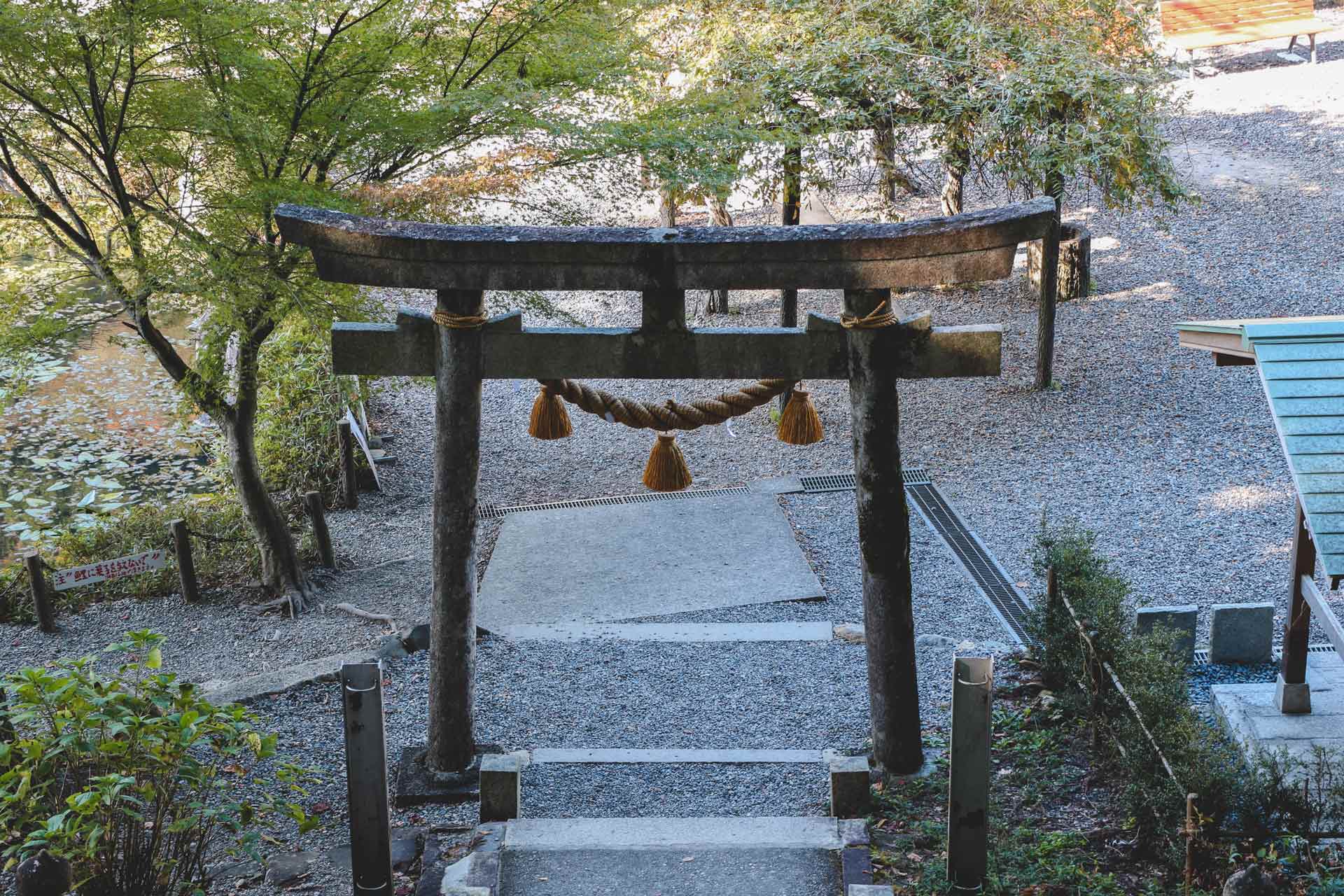
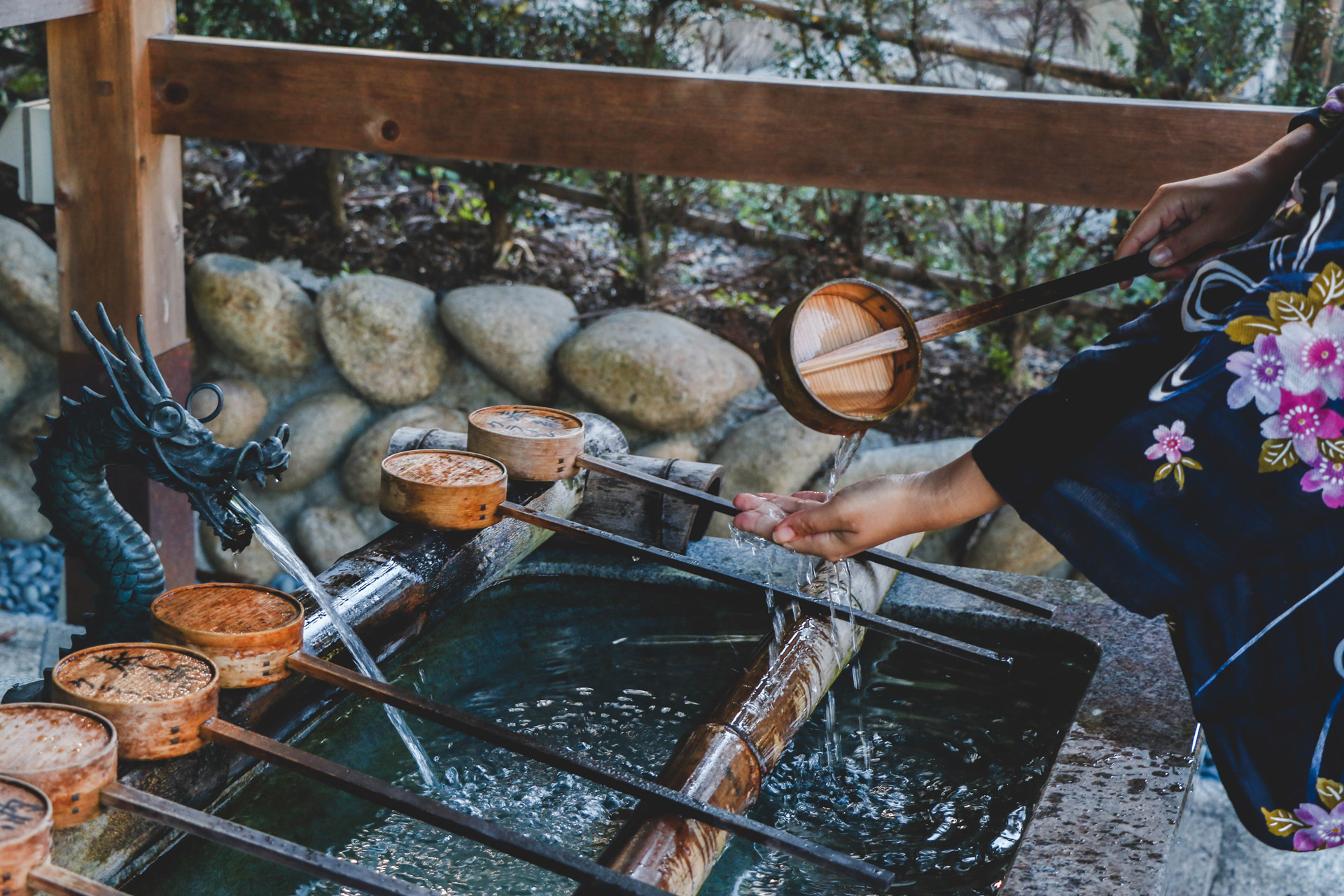

History Of Monet’s Pond

here are quite a few handwritten signs at the Monet’s Pond Site that tell the history and creation of Monet’s Pond – unfortunately for foreigners, most are in Japanese, so we’ve combined all the information into a handy translation below.
The crystal clear water of Monet’s Pond comes from the natural spring water of Mount Koga. Made from volcanic rock called rhyolite, the water is well filtered and therefore lacks nutrients for microbes to form. The lack of microbes results in amazing water clarity that makes the bold colours of the koi and surrounding florals particularly striking against the clear blue water. The fine quartz sand that covers the base of the pond gives the water its beautiful blue hue. The water’s colour is also known to change depending on the direction and strength of the light.
Because of the clarity, the pond often looks more shallow than it actually is, reaching a depth of 80cm.
What some may not realise is that this pond began its days as a weedy, overgrown and quite frankly, smelly reserve of water. Its sole purpose? An irrigation reservoir for the surrounding rice fields.
Originally known as Namonaki Pond (The pond without a name), it wasn’t until the 1990’s that the owner of the neighbouring Itadori Flower Park, along with local residents, decided to transform the reservoir into a beautiful pond. After clearing the site and removing all the weeds, they planted water lilies and donated colourful koi to bring the pond to life – a true ugly duckling to swan transformation moment!
How Namonaki Pond Became Known As Monet’s Pond
or some time after its transformation, Namonaki Pond remained largely unknown to tourists until the summer of 2015 where photos of the pond were uploaded to various social media sites in Japan. The spectacular beauty of the pond was an instant viral sensation, and with its
pristine blue water, flowering water lilies and stunningly vibrant koi, people instantly compared it to Monet’s masterpieces. It looked almost too beautiful to be real! This comparison stuck and while locals still refer to the pond as Namonaki Pond, it is now recognised across the world as Monet’s Pond.
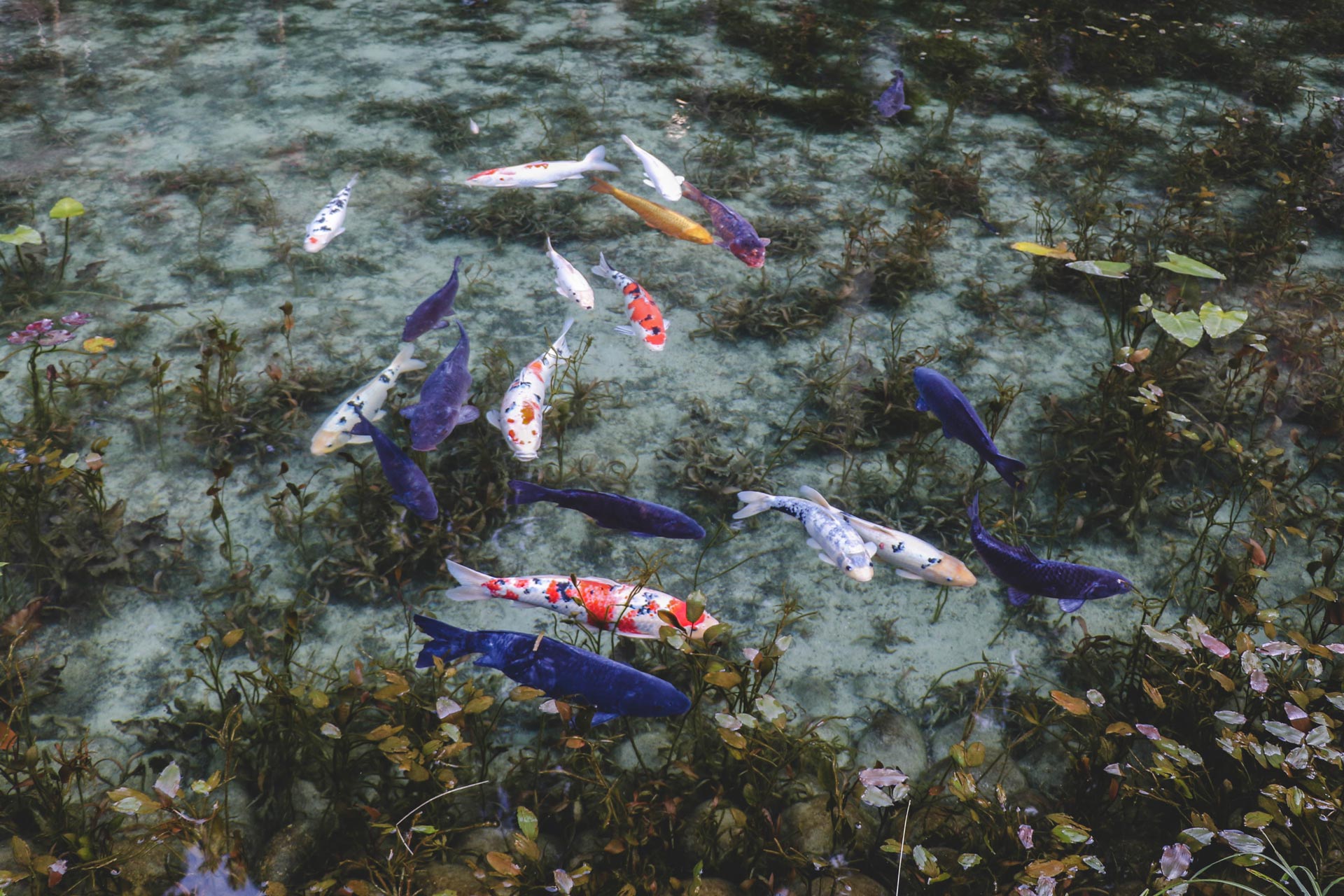
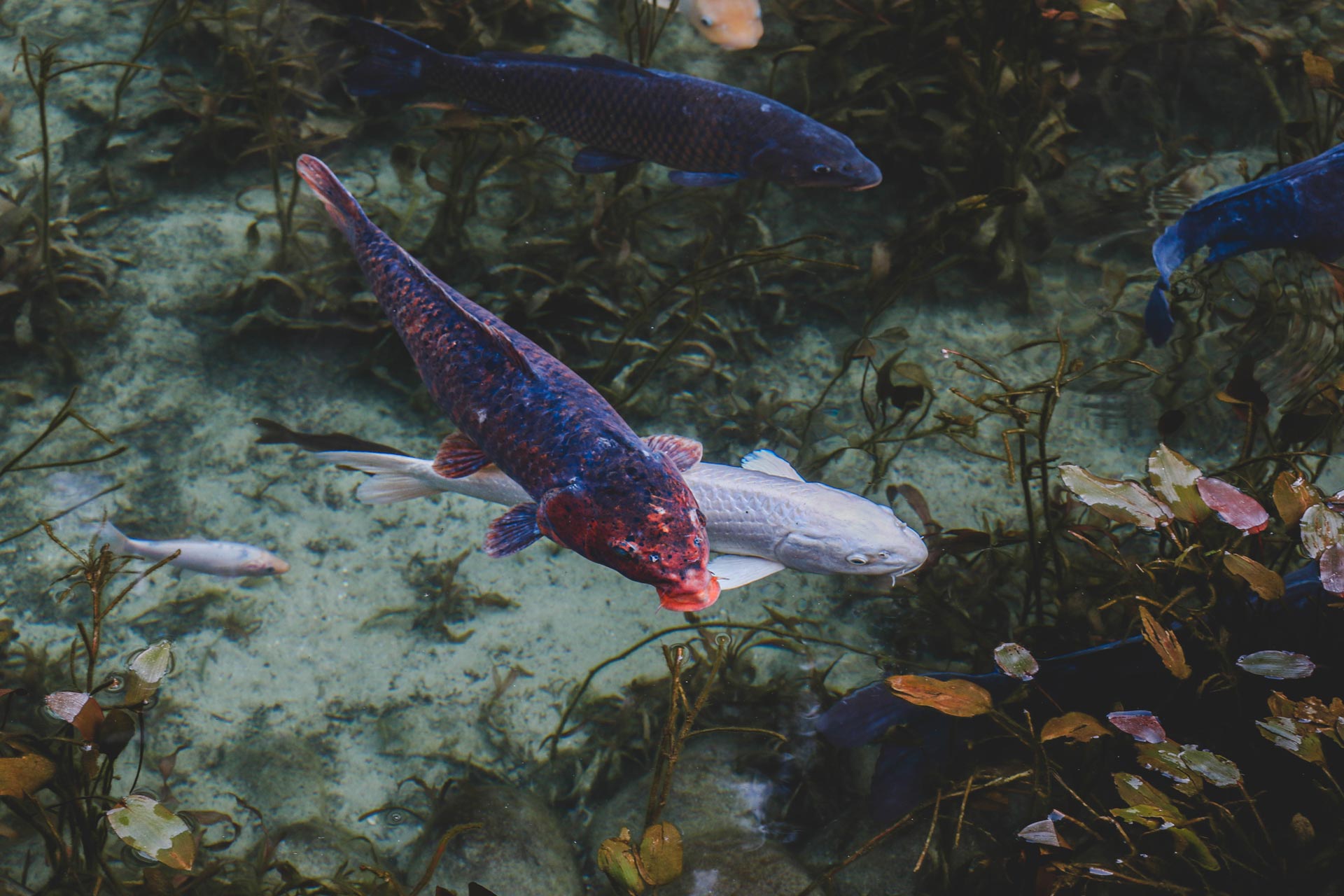
Is This The Real Monet’s Pond?
hort answer, no it isn’t. In fact, this pond wasn’t built in any way, shape or form with the intention to resemble artworks from the famous impressionist painter.
Claude Monet was one of the founding forefathers of French impressionist painting – a radical movement that violated the rules of academic painting. Where academic painting put preferences on lines, contour, controlled studios and lighting, impressionists valued free brushstrokes and capturing moments in time – think the transient effects of sunlight and candid portraits by painting outdoors ‘en plein air.’
It is a well known fact that impressionism was greatly influenced by Japanese art and imagery, with it’s unique subject matter, perspective and composition.
This may also explain why this natural pond in the middle of nowhere in the Gifu Prefecture, unintentionally resembles one of Monet’s most famous artworks.
The artworks in question are the series Monet is most well known for – his iconic Water Lilies series. It is in his home garden in Giverny where you’ll find the real ‘Monet’s Pond’ and the inspiration behind his paintings. Built with a Japanese aesthetic in mind, Monet’s Pond in Giverny features a Japanese-styled bridge that runs across a beautiful pond filled with floating water lilies. With these similar features, it is a unique coincidence that Namonaki Pond bears such a resemblance to the inspiration behind Monet’s paintings.
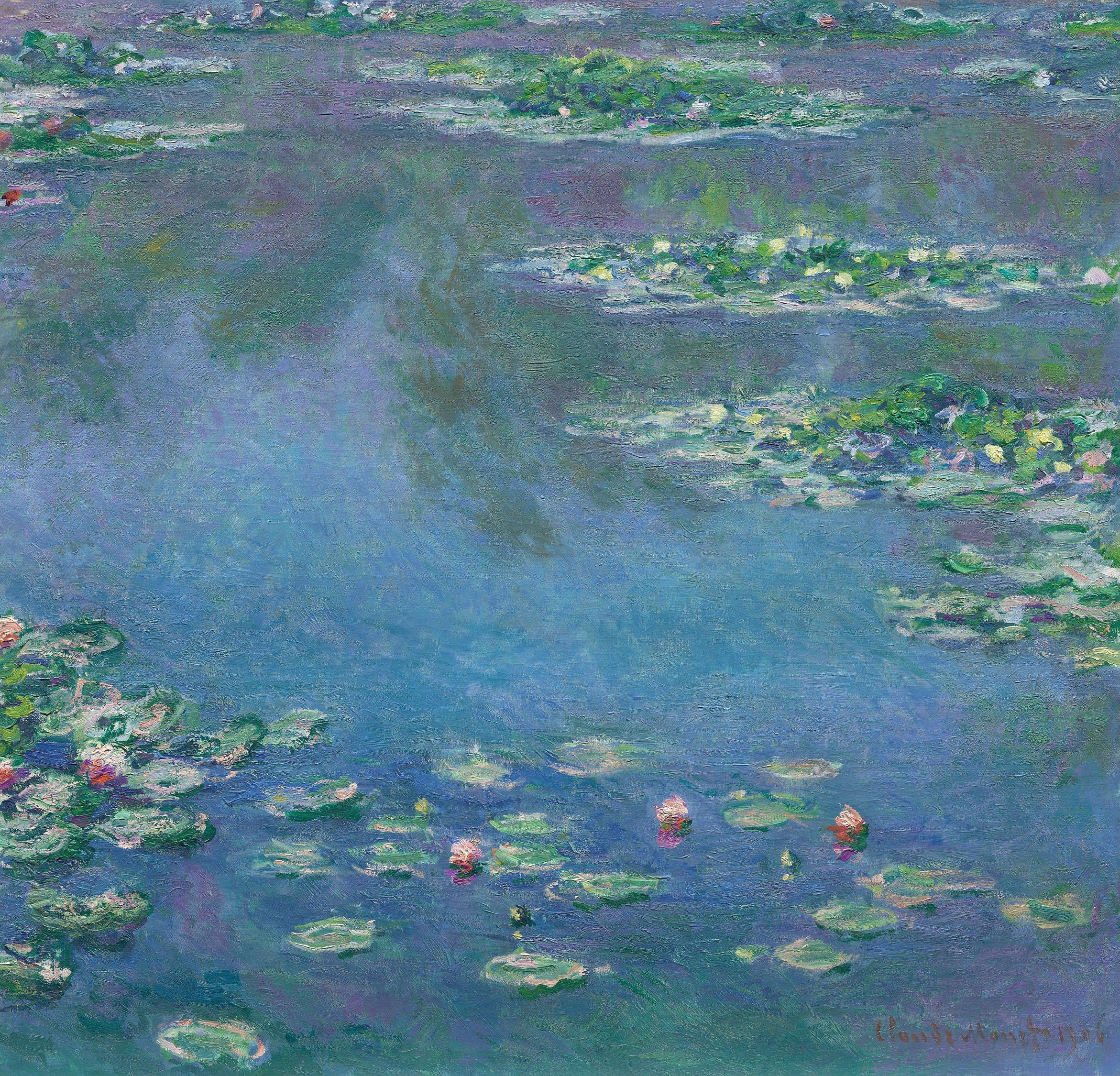
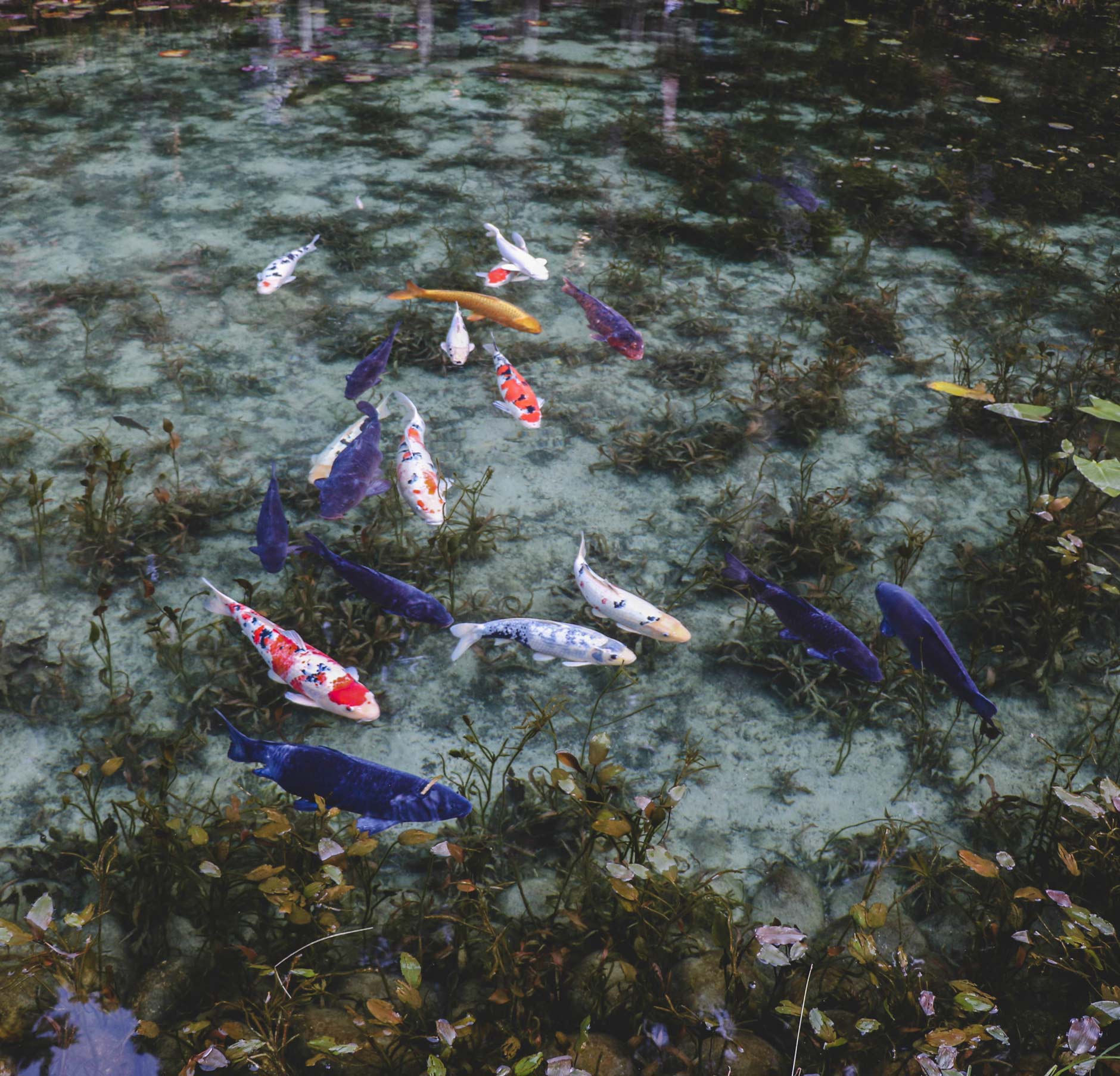
Seasonality – When To Visit Monet’s Pond
e recommend that whenever you visit Monet’s Pond, you visit in the morning not only to avoid the crowds, but to also get the best lighting for your photos.
Surprisingly, unlike other areas in Japan, Japanese tourists started arriving at the area ver early, especially for the Japanese. We arrived around 8am and I would say people started arriving around 8:30AM.
The pond’s water changes colour according to the sunlight. In direct sunlight, the water appears more green/yellow, but with indirect sunlight, you’ll get the vibrant blue tones which I believe creates a more magical atmosphere for photos.
The pond is fee to visit year round, and there are no opening hours.

Autumn
- Early Autumn: May still see some water lily blooms
- During this time of year the water lily leaves start to change red. Leaves will look a mix of green, red and deep purple. This is most apparent at the end of November.
- Also at the end of November the surrounding momiji leaves change colour and the effect is mirrored on the clear surface of the water.
Winter
If traveling in winter, it’s only worth a visit to the pond if it hasn’t gotten too cold or snowy. In December, you still may catch a glimpse of:
- Water lily leaves changing to red
- Changing momiji leaves and their mirrored effect on the pond.
Spring
- Water lily leaves changing to red and new green water lilies
Summer
- Mid June – Mid July: Changing water lily leaves and new green shoots (red and green colouring).
- Mid June – Mid July: When temperatures start reaching 25 degrees, the lily flowers start to open. In summer this is usually around 11:30am
- Late June – Early July: The hydrangeas are blooming.
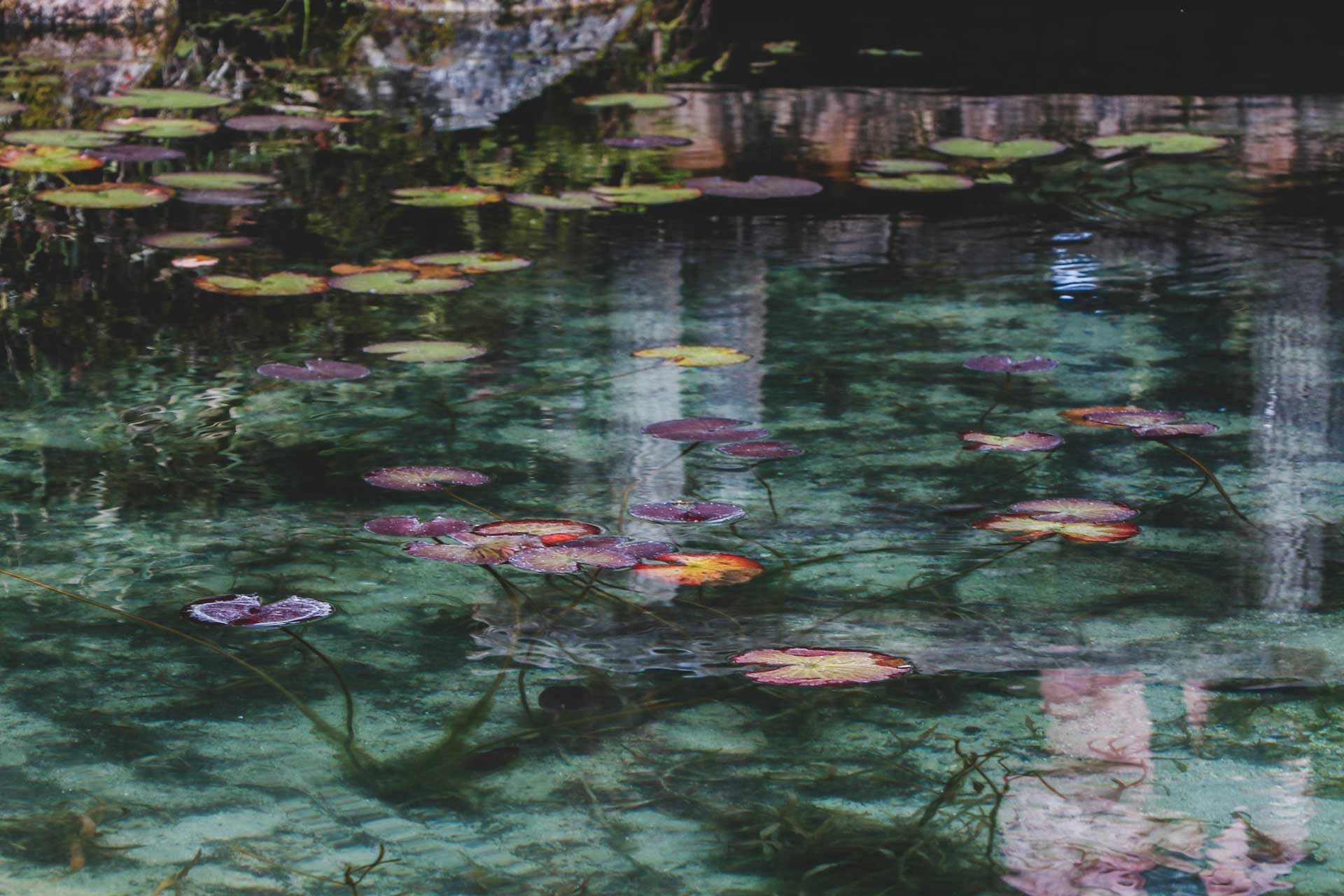
Do’s And Don’ts
- Do not use food to attract the fish. This makes the pond dirty and ruins the clear water for future tourists. Instead the koi respond to vibrations, so tapping on the wooden posts that surround the pond will bring them out of their hiding spots. The owner of the nearby flower park sometimes comes out to call the fish by tapping a tin can.
- Don’t visit the pond after heavy rain – this causes the pond water to become cloudy. This can last up to 2 days.
- Do not fly drones in the area – police will be called.

How To Get To Monet’s Pond
Monet’s Pond is actually located in the middle of nowhere and by far, the best way to visit is by car. From where ever your starting point is, simply navigate to Monet’s Pond using the Google Map we have provided below. For us, the small road leading up to the pond was closed and as a result, we couldn’t access the Shrine carpark or the carpark of Itadori Flower Park.
Luckily for us, there was a small parking station not too far away which was free and had plenty of parking available! We have also marked this on the map below.
The three different bus routes are as follows:
1.) JR Gifu Station (Gifu Bus [Gifu Itadori Line・Bus Stop 12], around 70 min, 660 yen) >> Horado Kiwi Plaza >> Ajisai-en Mae
2.) Seki Station’s Seki City Terminal (Gifu Bus [Seki Itadori line], around 60 min, 300 yen) >> Horado Kiwa Plaza >> Ajisai-en Mae
3.) Mino-shi Station (Gifu Bus [Makidani Line], around 35 min, 300 yen) >> Horado Kiwi Plaza >> Ajisai-en Mae
- Buy a JR Takayama – Hokuriku Area Tourist Pass (5 Days) for JR train travel all around Gifu and surrounding cities.
- Get affordable unlimited 4G WiFi for Japan for less than AUD$11
Search below to find accommodation near Gifu Station. Public transport links direct from Gifu Station to Monet’s Pond:
- Explore the scenic landscapes of Yumori Park.
- Journey the path of wandering traders, samurai and geisha’s at restored Edo Period town, Magome Juku.
- Visit a fairytale forest blanketed by moss at Chino Moss Forest.



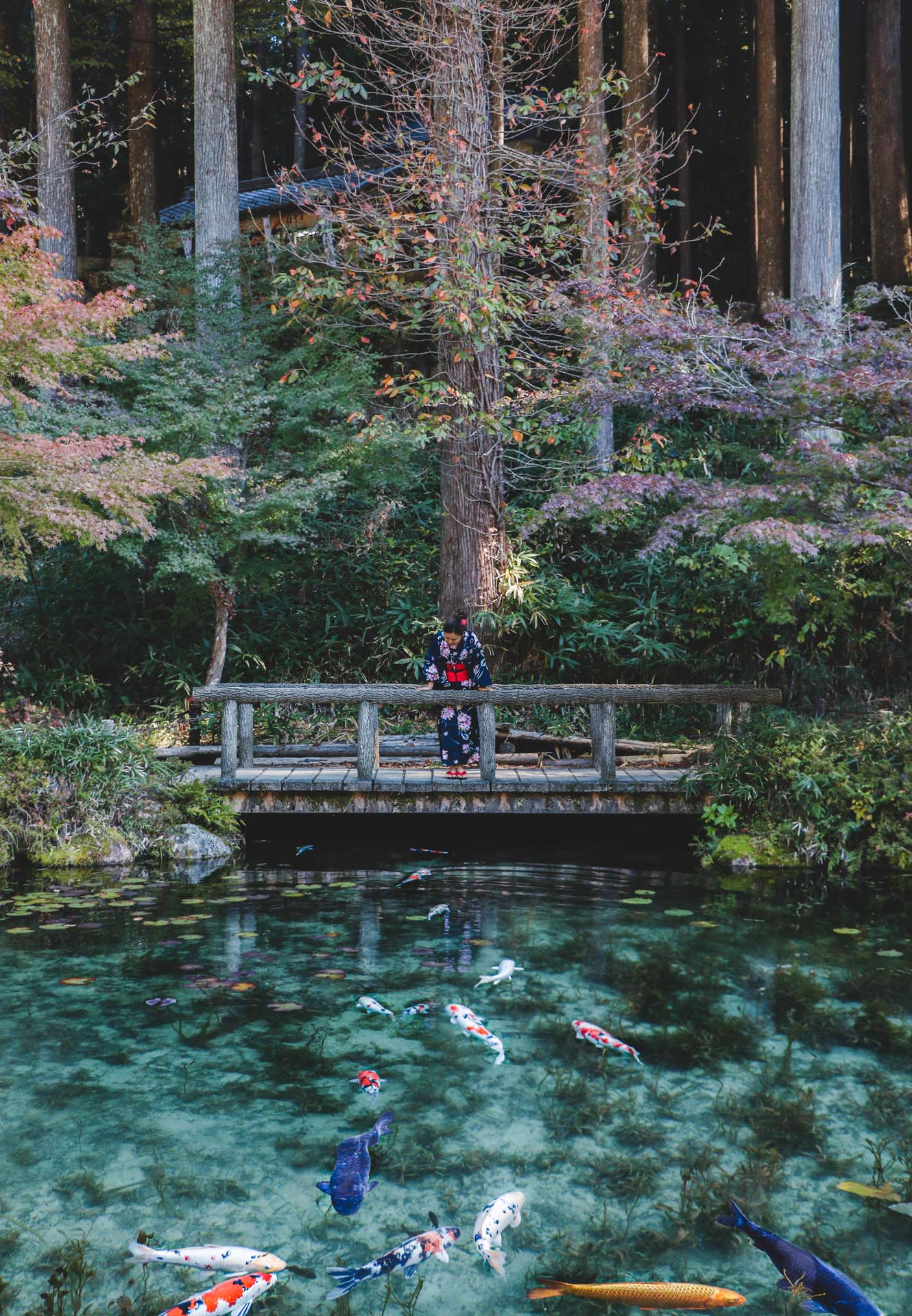






[…] One shrine that has become notable for its koi pond, which looks like a Monet painting, is the Nemichi Shrine in Gifu […]
Hi
Is the place reachable with JR pass?
What’s the nearest JR station to this place?
If I stayed in Hakata, how to go there?
Hi Lina,
Thank you for your question and for taking an interest in our post about Japan’s Monet’s Pond!
When you say “Hakata,” I assume you mean Hakata in Fukuoka Prefecture?
I would say that using the JR pass will only get you to Gifu Station which is a JR station and the nearest but from there, you will need to take the local bus services available to Monet’s Pond since it is in a remote area.
Here are some more details we wrote about getting to Monet’s Pond from Gifu station via public transport:
In the post we have also linked to GoGifu, which has some bus timetables: https://gogifu.wordpress.com/2018/02/28/monets-pond-the-hidden-gem-of-seki/ however the information has not been updated since 2019.